America Has Desegregated in Name Only
More than 50 years after the passage of the Civil Rights Act, people of color remain confined to the most destitute corners of the country.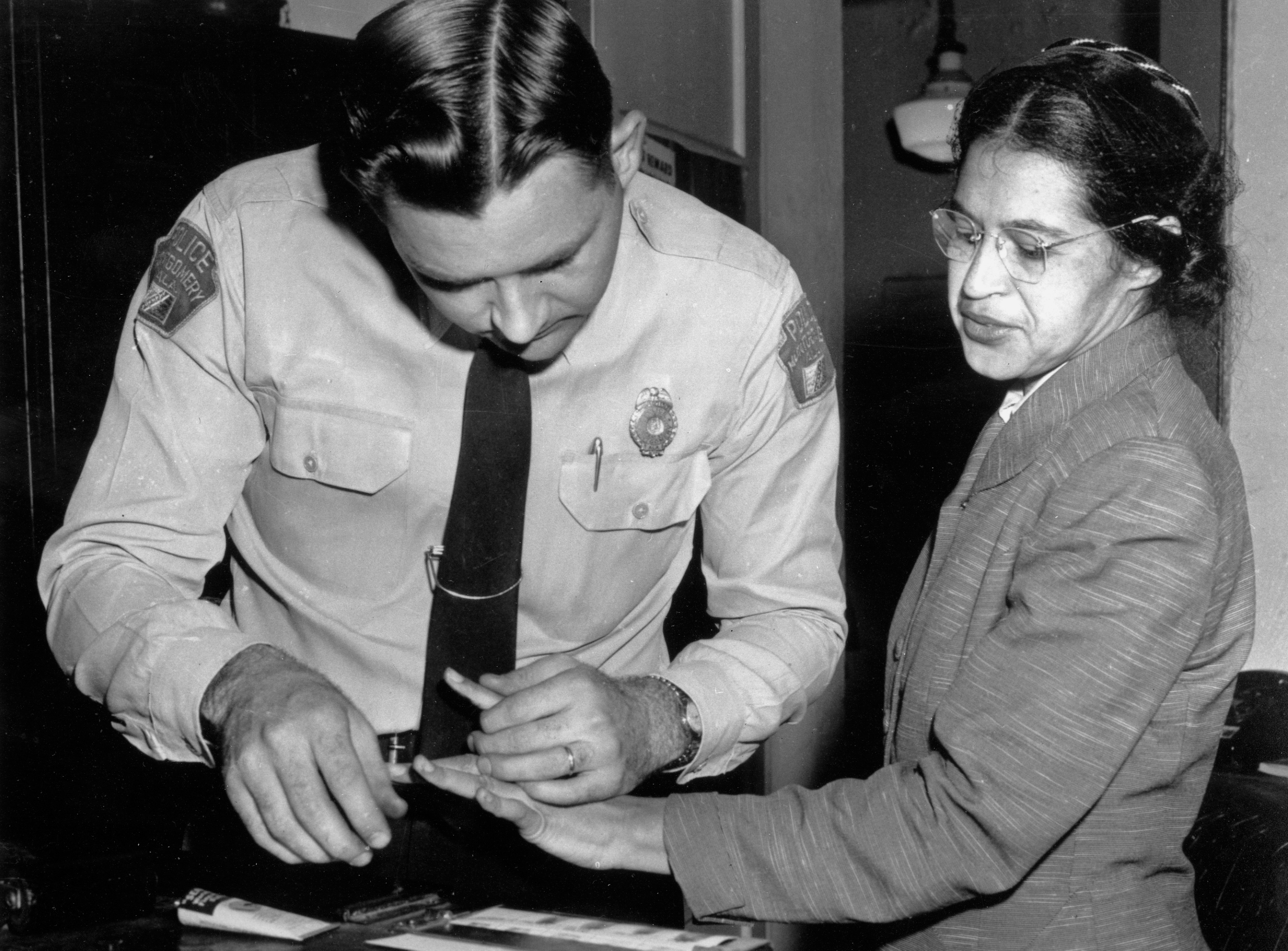 Rosa Parks is fingerprinted by police in Montgomery, Ala., two months after refusing to give up her seat on a bus for a white passenger in December of 1955. (Gene Herrick / AP)
Rosa Parks is fingerprinted by police in Montgomery, Ala., two months after refusing to give up her seat on a bus for a white passenger in December of 1955. (Gene Herrick / AP)
It’s a little-acknowledged reality that housing markets distribute more than mere dwellings. That’s because people’s place in the social order is intimately related to their geographic location generally, and where they live specifically.
Housing quality functions both as a reflection and driver of inequality. Beyond that, however, better homes come with better neighborhoods that afford other opportunity-expanding advantages: good, well-funded schools; high-quality and readily available health care; agreeable recreational facilities and parks; full-service grocery stores with healthy foods; excellent retail outlets; nice sit-down restaurants; well-kept roads and other infrastructure; safe distance from pollutants, major transport and cargo routes; proximity to pleasing natural vistas and settings; a vibrant civic and institutional life; abundant professional services; enjoyable public facilities, events and more. The least pleasant, spacious, healthy and expensive homes are commonly found in places where these and many other interrelated social premiums are scarce.
One’s chances of moving up in the social order are enhanced when one can move over in the spatial order—over to communities that offer more opportunity for social advancement. That’s the underlying truth of the classic theme song from “The Jeffersons,” a TV show that followed the travails of a middle-class black family that leaves the ghetto for a more affluent neighborhood of Manhattan. “Well we’re movin’ on up,” the lyric went, “To the East Side.” (Of course, gaining spatial entry to the privileged Upper East Side required the Jeffersons to first move up the economic ladder in order to afford access to the spatial and residential premiums of predominantly wealthy white living.)
When it comes to raising a child, a modest home in an opportunity-rich community might be preferable to a higher-end home in an opportunity-poor community. (My working-class mother-in-law’s decision to keep her family in a small house across from the Illinois Central Railroad in an affluent middle-class suburb meant that each of her children attended a first-rate high school—a welcome byproduct of the neighborhood’s hefty property taxes. This education, in turn, prepared them for higher education and a professional career.)
In the United States, as in other nations, the meaning of place—both spatial and social hierarchical—is highly racialized. The nation’s racial disparities, which are so vast that the median black household earns 8 cents for every dollar that the corresponding white household earns, are intimately related to a persistent de facto apartheid that keeps most African-American children living in predominantly poor and segregated communities, and attending equally poor and segregated schools. The country’s sickest and most destitute neighborhoods tend to have the highest concentration of black, Latino and Native American residents.
The nation’s tenacious racial separatism both reflects and reinforces this disparity, reminding us that separate remains unequal in a society where social and political resources are distributed unevenly.
The black middle class is not immune. It remains highly segregated and lives in much greater proximity to poverty, crime, police harassment and disease than does the white middle class.
Extreme black-white segregation spans entire metropolitan areas—which include numerous “inner-ring” suburbs like Harvey and Dixmoor, immediately south of Chicago, and Inkster, Mich., outside Detroit)—and the nation itself. Black Americans are spatially concentrated in cities and large metropolitan areas. They are remarkably scarce in the nation’s hinterland, excepting a handful of rural black communities that date back to Reconstruction.
The Great Migration of black Americans from the South to the North from 1916 through the 1960s was to disproportionately urban localities. This reflected both the location of the industrial workplaces that drew migrants from the racially hyper-oppressive South (Chicago’s packinghouses and steel mills; Detroit’s auto plants; Akron, Ohio’s tire factories; and so on), and the often-brutal hostility white small town and rural communities north of the Mason-Dixon Line showed to blacks in their midst. “Sundown Towns,” where blacks were unwelcome and found themselves in danger if seen “after sundown” (or before, often enough), were common across border states and the Upper Midwest during this era.
The nation’s enduring apartheid also has chilling implications for the nation’s increasingly polarized politics. It’s hard for citizens to form bonds of empathy and solidarity across racial lines when they experience so much of American life separately and unequally—even when they live in close proximity. (I am writing this essay in a condominium development on Rosa Parks Boulevard in Nashville, Tennessee’s Germantown neighborhood. The development inhabits a former cotton, flour and burlap bag mill that once employed hundreds of black and white workers, providing both groups with livable wages and a shared workplace. The plant closed decades ago. It was then purchased by a developer and refurbished with hundreds of fetching lofts housed almost exclusively with white professionals. Just across the street, which takes its name from civil rights hero Rosa Parks, the blocks are completely black and poor. The two neighborhoods might as well be distant planets.)
Thanks in large part to this racial separatism, the black experience—working and middle class—is largely invisible to most of white America. Without direct contact, whites get much, if not most, of their highly distorted sense of black reality through the filter of corporate media. Here, two images predominate.
On the one hand, there’s a parade of successful and affluent black sports, media and entertainment personalities (including anchors on most metropolitan television news teams), along with the occasional black political star like Colin Powell, Eric Holder, Patrick Duvall or Barack Obama. This helps feed the wildly false but widely held white belief, especially strong among the nation’s predominantly white Republican voters, that blacks are “getting ahead of whites” and that whites are the true victims of racial discrimination.
On the other, there are the news networks’ nightly footage of criminals and gang members and frequent portrayal of blacks as slothful, violence-prone offenders—especially in neofascistic law-and-order shows like “Blue Bloods,” “Cops,” and their ilk. Beyond helping drive white support for the nation’s giant, historically unmatched system of mass incarceration, this “urban nightmare” media feeds conservatives’ belief that any kind of black advancement is undeserved and unjustly enabled by leftists, who have rigged the American Dream against virtuous and hard-working white Americans.
At the same time, blacks’ ubiquity across our national media leads whites to radically overestimate the nation’s African-American population. (Whites believe nearly a third of the country is black, when in fact it’s closer to 12 percent.) This only fuels fears that whites are becoming, or have indeed already become, an overwhelmed and embattled minority in the U.S. That the Obamas occupied the White House for eight years has only encouraged this paranoia.
All this feeds the reactionary and racist, even creeping-fascist, politics of the Republican Party. So perhaps does the disproportionately black composition of the nation’s incarcerated population, which is detained in mostly rural and regions of the country (“upstate” in New York and Michigan, “downstate” in Illinois). Many rural, small-town whites’ main experience with black Americans is rooted in conflict—or perhaps in a fraught interaction with a cog in one of America’s largest growth industries in the neoliberal era (alongside casinos, opiate distribution and hog farms): the prison-industrial complex. That is hardly an environment conducive to fostering interracial empathy and solidarity. Exacerbating matters, rural prison towns’ vested interest in mass incarceration turns their populations and elected representatives into cheerleaders for “law and order” policies that saddle large numbers of black men with prison histories and felony records.
The more urban, liberal swaths of the country are no less guilty of this myopia. While I am a longstanding critic of the Democratic Party, I have been increasingly disturbed by the extent to which my keyboard comrades have been willing to hold their tongues about the creeping fascism of the modern GOP while railing against the neoliberal politics of its opposition.
Part of the explanation for this curious, damn-near TrumpenLeft tendency is spatial. The left, such as it is, tends to be concentrated in bright blue zones where the corporate and financial establishment have married fealty to big capital with a multicultural brand of representational identity politics. Republicans are numerically scarce and politically marginal in most of metropolitan America. When you fight the corporate and financial powers-that-be in urban America (as does any left worth its name), you go against outwardly liberal, multiracial, cross-ethnic and Democratic Party-affiliated “growth machines” rather than nativist and racist white Republicans like Donald Trump and Mitch McConnell.
That is no small part of why so many urban leftists today can sound so much like Trump apologists online, reflexively dismissing criticism of his presidency with the rejoinder that Obama-Clinton-Pelosi Democrats are terrible, too. It’s the dismal neoliberal Dems they see (and hate) up close. It’s harder to understand and acknowledge how dangerous the right truly is when their exposure to Trumpists is limited—if not nonexistent.
Some of my leftist companions might benefit from a few years of residence in the rural South, the Upper Midwest or the Great Plains. Living under a white-nationalist Republican Party, as I have on and off since 2009, can be instructive. You’ve got to experience the current Republican Party and its reactionary base up close to believe just how dodgy, deadly and toxic the nation’s conservative party has become.
If urban leftists underestimate the dangers of the right, then more conventional liberals’ spatial and social distance from the hinterland tends to distort their conception of small-town America. In truth, it offers potential allies in the struggle for a more decent, democratic and sustainable world.
At the same time, it is important not to lose sight of the ways in which our institutions inflate the political power of white conservatives. How does a right-wing Republican majority in the U.S. Senate get to pass a militantly partisan hack like Brett Kavanaugh through to the highest court in the land when majority U.S. public opinion stands well to the left of the GOP and Kavanaugh on countless policy issues? This is due in no small part to a Constitution that assigns two senators per state, regardless of its size.
Red Wyoming, which has a population of 573,720 Americans, holds U.S. senatorial parity with blue California, home to more than 39 million. The former has one U.S. senator for every 287,000 residents, while the latter has one U.S. senator for every 19.5 million residents. Just one of New York City’s eight boroughs, Brooklyn, has 2.6 million people. If Brooklyn were a state, and it were apportioned the same ratio of populace to elected official as Wyoming, it would have nine U.S. senators—likely all of them Democrats.
This apportionment system means that the Republican Senate majority answers to a disproportionately white, rural and reactionary section of the electorate. Due to “a growing population shift from the agricultural interior to crowded corridors along the coast,” Daniel Lazare noted last year, it is mathematically possible now to “cobble together a Senate majority with states that account for just 17.6 percent of the popular vote.”
Another geographically related farce of “democracy” that lives on in the U.S. is an Electoral College system that “triples the clout of the eight smallest states and doubles that of the next six” (Lazare). This ludicrously undemocratic method of electing U.S. presidents has ensured the victory of two popular vote losers in the past five election cycles (2000 and 2016). Equally absurd is the ubiquitous political-geographic gerrymandering that tilts state legislatures and the House of Representatives far to the right of the populace by inflating the representation of predominantly white rural and ex-urban regions.
But progressives must not write off the nation’s rural and exurban spaces as hopelessly, completely and inherently regressive. Doing so is particularly self-destructive in a system that badly exaggerates the political power of the nation’s most right-wing regions, even if the abolition of gerrymandering is long overdue.
More than half a century after the passage of the Civil Rights Act, the call for racial and socioeconomic desegregation in the United States remains as urgent as ever, no matter how many black and brown faces appear on our movie, television and computer screens.
Your support matters…Independent journalism is under threat and overshadowed by heavily funded mainstream media.
You can help level the playing field. Become a member.
Your tax-deductible contribution keeps us digging beneath the headlines to give you thought-provoking, investigative reporting and analysis that unearths what's really happening- without compromise.
Give today to support our courageous, independent journalists.
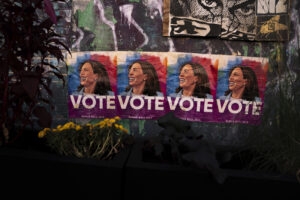
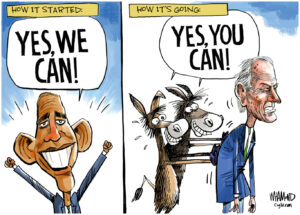

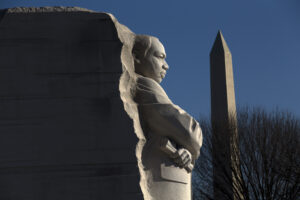

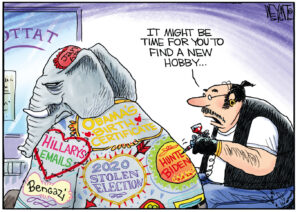


You need to be a supporter to comment.
There are currently no responses to this article.
Be the first to respond.